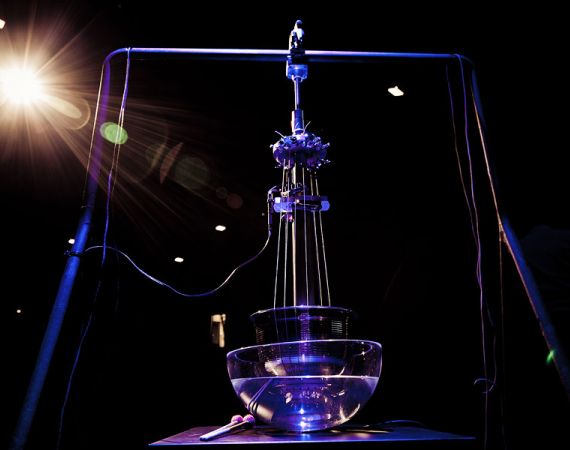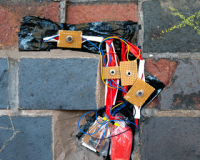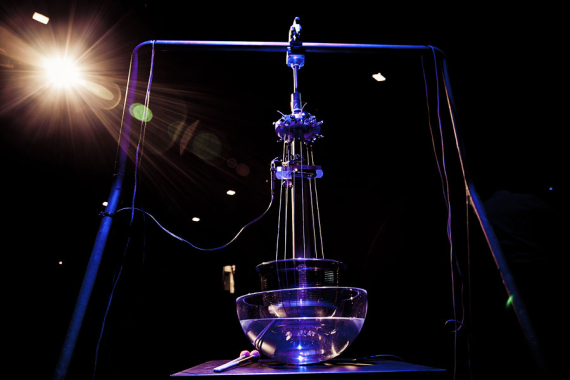Posted on Thu 26 May 2016
Ignorance and Bravado
My day job is pretty cool; I work with a chap called David Morton building musical instruments - www.mortonunderwood.co.uk David is a research engineer with an impressive CV. I am a dreamer/dabbler/hacker. We work well together.

Posted by
Project

Studio Residencies 2012: Geiger-Muller Sound System
Supported by a Studio Residency writer, performer and composer Timothy X Atack and musician, sound artist and instrument designer MrUnderwood developed a finite kinetic choir.
My day job is pretty cool; I work with a chap called David Morton building musical instruments - www.mortonunderwood.co.uk
David is a research engineer with an impressive CV. I am a dreamer/dabbler/hacker. We work well together.
We often say that what I bring to our partnership is "ignorance and bravado". This is not really meant as a criticism as ignorance can lead to great things, new ways of thinking, and bravado helps us get our stuff seen/used.
As we work so well together David is involved in the background with this project, as a sounding board. I sent him the summary of our thinking that Tim wrote. I wanted to share his response here as it has been very helpful in formulating our approach so far:
"
1. The tricky bit here might be that the change in number of people could be dwarfed by other factors.
More people = higher resistance would be a reasonable assumption for a given temperature and humidity, but it won't hold across the vagaries of the English climate.
I'm not certain (because I don't have a cupboard full of test subjects to hand), but I would expect five people holding hands on a hot and sweaty summer day to have a total resistance substantially lower than two people holding (un-gloved) hands on a very cold and dry day.
2. Cabot Tower is 32m tall. One problem with such a long string length will be getting anything *other* than infrasound out of this harp.
A quick back-of-envelope calculation gives the tension needed to get E1 (the low E of a bass guitar = 41Hz) from an extra-long 12 thou electric guitar string would be nearly 890 lbs (or 400Kg if you prefer), which is far more than the string could stand.
Take it down an octave to E0 (20.6Hz) and we still need 222 lbs (or 100Kg) which would still be too much for the string.
The A below that (14.6Hz) is manageable at 99 lbs (45 kg), but now you're making infrasound.
Thicker strings will stand more tension but resonate at a lower frequency. Lighter strings offer higher pitch at the same tension but aren't as strong.
If you want audible sounds then a much shorter tower would be simpler. If infrasound is what you really want, then that's much easier.
Cabot Tower is also a Grade II listed building. I imagine the amount of paperwork required to permit the installation of tuning pegs would be breathtaking…
3. An atomic power source? No, not unless you're NASA. Even then…
The power source is key here. It's possible that 2012 battery technology—perhaps the kind used to provide backup power for vehicle telematics—can get close if you keep the power consumption very low. To do that you're going to have to give up the idea of a constant sound—even if it's very quiet—in favour of an intermittent one. With a duty cycle of fifteen seconds every hour, for example, things get easier; a minute every day is easier still.
Topping the battery up using photovoltaic cells on the outside of the box is another possibility (you could use heat or movement in a similar way). The problem with such designs is that unless you're very cunning the controller and recharging circuits eat all the additional power.
"
